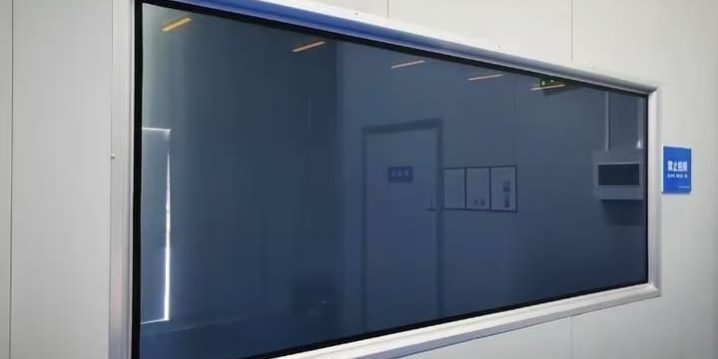Dichroic liquid crystals are a class of materials that perfectly combine the ordered alignment characteristics of liquid crystals with the anisotropic light absorption properties of dichroic dyes. They do not refer to a single substance, but rather represent a material system.
To better understand, we can examine them from two perspectives:
Perspective 1: Host-Guest “Dichroic Liquid Crystal Mixtures”
This is the most common and widely applied form. It consists of a mixture of a host (liquid crystal) and a guest (dichroic dye).
- Host: Liquid Crystal
- Nematic liquid crystals are typically used because their molecular long axes tend to align along a common direction (exhibiting order) while still maintaining fluidity.
- Role: To provide a highly ordered “framework” or “directive field” that can respond to external fields (such as electric or magnetic fields). The orientation of the liquid crystal molecules determines the orientation of the dye molecules.
- Guest: Dichroic Dye
- These are typically azo or anthraquinone dyes mentioned previously, whose molecular structures are designed to be rod-shaped, similar to the liquid crystal molecules.
- Role: To act as “guests” dispersed within the liquid crystal host. Due to intermolecular interactions, the dye molecules will “follow” the alignment direction of the liquid crystal molecules. When the liquid crystal molecules reorient under an external field, the dye molecules rotate synchronously.
Working Principle:
- Initial State: Without an external field, the liquid crystal and dye molecules are randomly aligned. The film may appear colored or opaque.
- Applying an Electric Field: When an electric field is applied, the liquid crystal molecules (due to their dielectric anisotropy) will uniformly rotate to a direction parallel or perpendicular to the electric field direction (depending on the liquid crystal type).
- Synchronous Rotation of Dyes: The guest dichroic dye molecules subsequently rotate in sync.
- Change in Light Absorption: Because the dye is dichroic, it absorbs light most strongly when its long axis is parallel to the polarization direction of the light, and most weakly when perpendicular. Therefore, by switching the electric field on and off, the orientation of the dye molecules can be controlled, thereby regulating whether the entire device is in an “absorbing” (dark state) or “transmitting” (bright state) mode.
A well-known application of this system is the “Guest-Host Effect Liquid Crystal Display.”
Perspective 2: Intrinsic “Dichroic Liquid Crystals”
This is a more advanced concept, referring to materials that are intrinsically both liquid crystalline and dichroic. They do not need to be doped as “guests” into other liquid crystals.
- Most Typical Representative: Liquid Crystalline Azobenzene Compounds
- Characteristics: These molecules themselves contain an azobenzene group (providing dichroism), while their overall molecular structure possesses a combination of rigidity and flexibility, enabling them to exhibit liquid crystal phases within a certain temperature range (providing liquid crystallinity).
- Dual Stimulus Response: They respond not only to electric fields like ordinary liquid crystals but, more uniquely, also to light.
- Light-Response Mechanism: When irradiated with light of a specific wavelength (e.g., ultraviolet light), the azobenzene molecules undergo a configurational transition from the stable trans form to the metastable cis form. This significant shape change (from rod-like to bent) disrupts the liquid crystalline order, inducing macroscopic phase transitions or orientation changes.
- Reversibility: Upon exposure to visible light or thermal annealing, the molecules can revert to the trans configuration.
- Advantage: This enables the realization of electrode-free, remote, and precise photo-controlled devices.
Core Features and Advantages
- High Order Parameter: In well-aligned liquid crystal systems, dichroic dye molecules can achieve very high orientation order, meaning their “dichroic ratio” is much higher than when dispersed in ordinary isotropic solvents.
- Electrically/Optically Tunable: The light absorption and color of the entire material can be controlled reversibly and rapidly via electric fields or light.
- Macroscopic Uniformity: Enables large-area, uniform changes in color or transparency.
Main Application Fields
- Smart Dimming Films / Smart Windows
- Utilizing the “guest-host effect,” they switch between a transparent state and a dark state (e.g., blue, gray) by turning a voltage on and off. Used in car sunroofs, building curtain walls, etc., for privacy protection and solar heat management.
- Anti-Glare Mirrors
- Used in automotive rearview mirrors; the mirror dims when applying voltage in response to headlights from following vehicles, effectively reducing glare.
- High-Performance Display Technology
- Guest-Host Mode LCDs: Potential for wide viewing angles and high contrast.
- Photo-tunable Devices: Utilizing the photo-responsive properties of intrinsic dichroic liquid crystals to develop new photonic devices and display modes.
- Optical Data Storage and Sensors
- Utilizing the photo-induced alignment changes of azobenzene liquid crystals for creating gratings, holographic storage elements, and chemical/biosensors.
Summary:
Dichroic liquid crystals are a powerful functional material platform. By integrating the “conducting capability” of liquid crystals (order and tunability) with the “performance capability” of dyes (anisotropic absorption), they enable intelligent, dynamic, and efficient control of light. Whether traditional guest-host mixtures or advanced intrinsic photo-responsive liquid crystals, they play a vital role in the next generation of smart optical devices.





